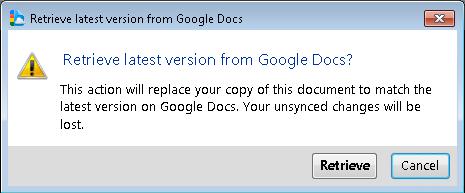The Realities of Google Cloud Connect
Some interesting notes in a blog post from my co-worker Tony Tai with the Office 365 team that I wanted to bring to your attention related to the Google Cloud Connect offering. Tony sheds some light on the realities behind the functionality as well as the security and privacy concerns customers should consider. A couple of other posts I've highlighted (here and here) in the last couple of days demonstrate Microsoft's commitment to worker productivity using cloud services, I urge you to review them. If you're looking for more information on Microsoft's cloud offerings, please check out the Office 365 and Cloud Power sites. I've included the full text of Tony's post below as well.
Thanks - Allen
------------
Google recently released Cloud Connect for Microsoft Office. You might have heard some buzz. When the Cloud Connect beta came out in November 2010, people expressed their frustration with the tool's ability to deal with the most straight forward tasks. Now that it is available we've taken a look to provide Microsoft's initial perspective on the released add-in.
Google has a noble outward goal to help improve productivity with Microsoft Office by enabling people to co-edit directly from Office Word, Excel, or PowerPoint. No small task, we should know - we released similar capabilities with Office 2003 called Document Workspaces and Shared Workbooks, and Word 2002 Compare and Merge.
Office 2003 Shared Workbooks |

Office 2002 Compare and Merge Document |
What we know from over 25 years of building industry leading productivity tools is that our number one job is to make it easier and less time consuming for people to work together. That is one of the primary drivers of our co-authoring capabilities in Office 2010, the creation of the Office Web Apps and our tight integration with Windows Live SkyDrive and Microsoft SharePoint. One thing we have learned through years of working with both the industry's largest companies as well as individuals is that our software must work in predictable and trustworthy ways. This is why when we built our co-authoring capabilities for Office 2010, it was critically important to maintain the integrity of documents and content. What does that mean? It means that what gets created is maintained no matter which Office client you are using, Office 2010 on the desktop, the Web Apps in SkyDrive or SharePoint or on a Mobile device. That should mean no rework, no lost data, no surprises or gotchas.
From our initial look at Google's Cloud Connect it is obvious we have very different takes on how to improve productivity.
Let's take a look at what we found:
As you can see from the demo above, the experience with Google Cloud Connect is problematic on several levels.
Loss of Data & Productivity
Working on documents becomes more complex because:
The basic process of setting a document up for sharing with Cloud Connect is a multi-step process and is not intuitive for most users.
Not all features or file types work with Cloud Connect. As a result, it often leads to unexpected errors.
According to Google, Cloud Connect can impact the performance of your applications.
Simultaneous editing can easily lead to syncing errors and data loss.
 |
 |
Reduced Office Functionality
Users will have to sacrifice core Office functionality, such as Track Changes and conditional formatting, sort settings, table styles, slide transitions, sounds, print settings, just to name a few. While these features may be considered overkill or to complex for Google, they are examples of the wide range of tasks Office users do everyday.

Google recommends turning off other Office add-ins (that could be from Microsoft or 3rd party applications) that according to Google can conflict, and this conflict could lead to "erratic behavior" of the add-in. It may be me, but I don't want "erratic behavior" when I'm working on critical business documents.
Documents cannot be over 5MB which is a relatively low limit especially for business critical PowerPoint and Excel files.
Security and Privacy Concerns
The best attempt to reduce syncing errors with Cloud Connect is to set up the add-in for automatic syncing. When automatic syncing is turned on, all Office files that are opened and saved are automatically synced with your Google Docs list which is stored on Google's servers. Unless you change the default setting, anyone in your domain can find and access your document. Imagine your HR professional opens an Excel document with salaries and social security numbers, makes a change and then saves. Oops, unintended and unknown sharing to the rest of the organization. This kind of approach to privacy and security are simply unacceptable to the majority of business users. Perhaps more importantly, it begs the question, "Is Google's heart really in the business market, or is it in advertising where 97% of its revenues come from? If it's the latter, that may explain why anyone who installs Cloud Connect will have all of their documents synched to Google's cloud. As Google creates more surface area to collect your personal data, individuals and businesses alike are beginning to question if and how that data is being used.
Google would like to provide "radical productivity gains". To do so, I believe people expect much more than Google has demonstrated in supporting enterprise customers. Lost data and privacy are not bugs that you fix in later versions. And, commitment to this space requires more than simply writing code for the browser. If you had tried Cloud Connect add-in, tell us your own experience in below comments.
